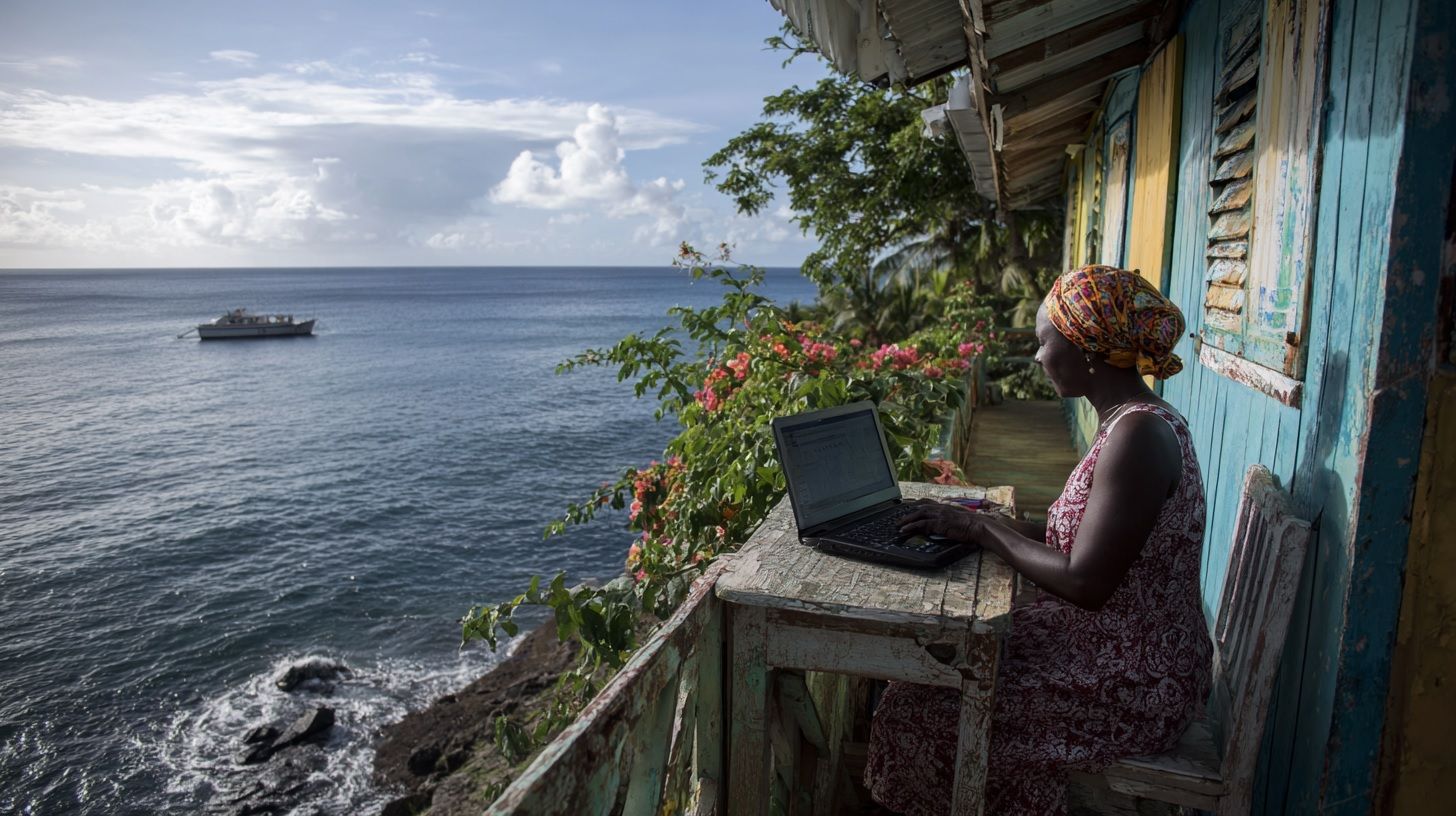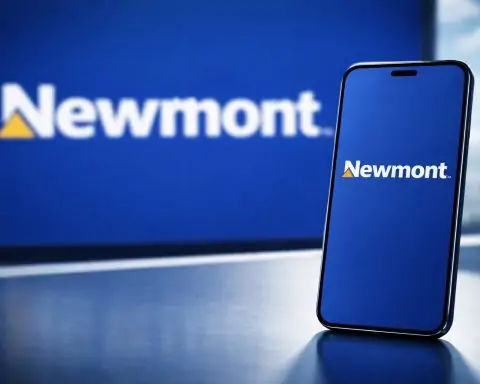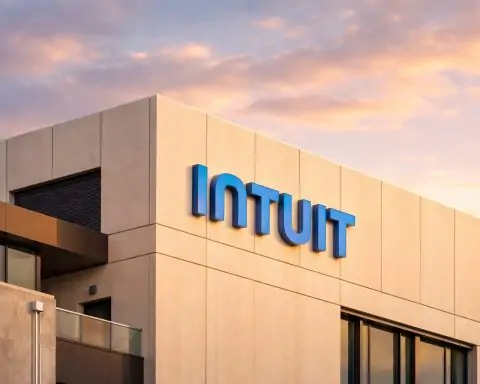- Flow provides hybrid fiber-coax and some FTTH with up to 400 Mbps fixed download, and the Internet Select 400 plan costs EC$117.68 per month (VAT included).
- Digicel+ offers FTTH up to 500 Mbps fixed download (40 Mbps upload) on standard plans, with a 350 Mbps Home Fibre 350 plan at EC$174/month and a 500 Mbps Home Fibre 500 plan at EC$209/month, plus a 1 Gbps option on premium plans.
- Starlink entered Saint Lucia in late 2024, with residential plans around US$80 per month for unlimited data, a one-time dish cost of roughly US$350–$600, and typical speeds of 50–150 Mbps download and 20–40 Mbps upload, with 20–40 ms latency.
- Soufrière was equipped with 28 free public Wi‑Fi hotspots in 2021 as part of the GINet program, using fiber backhaul from Flow and funded by the Universal Service Fund.
- Saint Lucia hosts the Saint Lucia Internet Exchange (SLiX), established in 2014, enabling on-island traffic exchange among major operators and reducing international bandwidth costs.
- Flow and Digicel’s 4G LTE networks reach about 95% of the population, with typical mobile data speeds from a few Mbps to 20–30 Mbps in strong signal areas, and 5G has not yet launched (less than 1% of devices).
- As of early 2023, about 78% of Saint Lucians were internet users (roughly 140,000 of 180,000), with 2025 estimates around 74–80% usage and urban centers enjoying higher speeds.
- The National Broadband Policy and Strategy (2023–2025) under CARDTP aims for universal broadband by around 2028, emphasizing affordable, meaningful connectivity, hurricane resilience, cybersecurity and data protection, with USF funding for projects like GINet and school/connectivity initiatives.
- Digital literacy programs include Digital Literacy Summer Camps in 2023 training over 200 students from 13 constituencies, plus a goal to train at least 3,500 Saint Lucians by 2026 through CARDTP and SALCC/NGO partnerships.
- Emerging trends include 5G on the horizon for the 2025–2026 period, other satellite constellations like OneWeb or Kuiper, and hybrid networks that could link Starlink backhaul to village mesh networks, with regulatory updates anticipated.
Saint Lucia is experiencing a quiet digital revolution. Once limited by slow connections and spotty coverage, the island now boasts fiber-optic broadband, ubiquitous mobile internet, and even satellite links beaming connectivity from space. This report explores every facet of internet access in Saint Lucia – from the major service providers and infrastructure, to government initiatives and emerging technologies – painting a comprehensive picture of how this Caribbean nation is bridging the digital divide.
Major Internet Service Providers (ISPs) and Plans
Saint Lucia’s internet market is dominated by two main ISPs: Flow (the incumbent provider, part of Cable & Wireless/Liberty Latin America) and Digicel+ (a newer competitor with a state-of-the-art fiber network). These companies offer a range of home broadband plans, alongside island-wide mobile data services. In late 2024, a new player entered the scene in the form of Starlink satellite internet, expanding options for remote and rural users [1]. Below is a comparison of the major providers, their technologies, and offerings:
| Provider | Network Type | Top Speeds (Download) | Sample Plan & Price | Coverage / Notes |
|---|---|---|---|---|
| Flow | Hybrid fiber-coax (HFC) and some fiber-to-the-home; 4G mobile | Up to 400 Mbps fixed download (40 Mbps upload) [2]; mobile 4G up to ~30 Mbps | “Internet Select 400” home plan: 400 Mbps for EC$117.68/month (VAT inc.) [3]. Bundles available with TV/phone. | Widest fixed network in towns; 4G mobile covers most areas. Incumbent known for reliability, but basic plans have limited speed [4]. |
| Digicel+ | Fiber-optic (FTTH) broadband; some fixed-wireless; 4G mobile | Up to 500 Mbps fixed download (40 Mbps upload) on standard plans [5] (premium 1000 Mbps option available) [6]; 4G mobile similar to Flow | “Home Fibre 350” plan: 350 Mbps for EC$174 (VAT inc.) [7]. “Home Fibre 500” plan: 500 Mbps for EC$209 (VAT inc.) [8]. Disney+ streaming included on many plans [9] [10]. | Newer network with fast fiber rollout in populated areas; aggressive speeds and promos. 4G mobile network comparable to Flow’s in coverage. |
| Starlink | Low-earth-orbit satellite internet (SpaceX) | Typically 50–150 Mbps download (20–40 Mbps upload) with low latency | Residential plan: ~US $80/month (≈ EC$216) for unlimited data [11]. One-time hardware cost ~$350–600 for satellite dish. | Available island-wide since late 2024 [12]. Ideal for rural areas, boats, or backup connectivity. Requires clear view of sky; self-installation. |
Table: Key Internet Providers in Saint Lucia – network types, speeds, and pricing. (Note: EC$ refers to Eastern Caribbean Dollars; EC$2.7 ≈ US$1.)
Service Quality and User Experiences
Customers generally benefit from the competition between Flow and Digicel, which has driven higher speeds and better value in recent years. Both ISPs now offer plans with hundreds of Mbps, a drastic improvement from a decade ago. For example, Ookla data show Saint Lucia’s median fixed broadband speed was about 75 Mbps in early 2023 – a 50% jump in one year [13]. This reflects network upgrades (e.g. Flow boosting old copper systems, Digicel deploying fiber) and suggests that even higher speeds are increasingly common. Indeed, many urban households now enjoy streaming and video calls with ease.
However, service quality can vary by location and plan. Flow, the legacy provider, still has some customers on older infrastructure (DSL or coaxial cable) in outlying areas, which can mean slower speeds or reliability issues. One local commenter noted that “Flow internet is terrible [on] basic [plans] – barely any internet” until you upgrade to a higher tier [14]. In hilly or remote parts of the island, users report that heavy rain can degrade Flow’s connection, at times forcing a switch to mobile data [15]. By contrast, Digicel’s fiber offerings have earned praise for their high throughput; Digicel often bundles perks like Disney+ streaming to add value [16]. Still, Digicel’s coverage is concentrated around populated districts, so not every community can access its fiber yet.
For those living or working in areas without reliable wired service, the mobile networks and new satellite option provide a lifeline. Residents have found that a Digicel 4G data SIM can handle remote work needs – one visitor used a 7-day Digicel Prime bundle (around EC$27/week) and managed 4–6 hours of daily Zoom meetings with excellent coverage in the north of the island [17] [18]. This kind of user experience underlines how important diverse connectivity options have become in Saint Lucia’s digital landscape.
Internet Infrastructure: Fiber, Wireless, and Public Wi-Fi
Saint Lucia’s internet infrastructure is a mix of modern fiber-optics, wireless networks, and community Wi-Fi initiatives, all layered onto the island’s geography. Key elements of the infrastructure include:
- Fiber-Optic Backbone and Broadband: Both major ISPs have invested in fiber. Flow has been upgrading its old coaxial/copper network to hybrid fiber-coax and FTTH in many areas, enabling plans like 400 Mbps for home users [19]. Digicel entered the market with a brand-new fiber backbone, quickly rolling out FTTH in Castries and other towns. Digicel’s residential fiber plans range from 250 Mbps up to 500 Mbps (and even 1 Gbps for premium clients) [20] [21]. These fiber networks are supported by undersea submarine cables that link Saint Lucia to global internet hubs. The island has multiple upstream connections (e.g. the Southern Caribbean Fiber and ECFS cables), giving redundancy and resilience to international connectivity – the Internet Society rates Saint Lucia’s upstream diversity as “Good” (more than two separate links) [22].
- Mobile Broadband (3G/4G Networks): Mobile telecom is the de facto internet for many Saint Lucians, especially in rural districts. Flow and Digicel both operate 4G LTE networks that together reach about 95% of the population [23]. This wide coverage means that even villages far from the city can get online via smartphones or 4G modems. Typical mobile data speeds range from a few Mbps up to ~20–30 Mbps in strong signal areas – enough for social media, messaging, and YouTube. While 5G has not yet been launched (less than 1% of devices have any 5G signal at present) [24], [25] the groundwork is being laid for future upgrades. In the meantime, mobile connectivity has been a game-changer for bridging the urban–rural digital gap: people without a fixed line can still use email, e-banking, and online learning through their phones. Mobile data plans are offered as both prepaid bundles (e.g. weekly or monthly data packs) and postpaid plans. Prices are generally affordable, with a basic 1 GB daily pack costing just a few EC dollars, and unlimited social media packages popular among youth.
- Public Wi-Fi and Community Networks: The government has recognized that certain communities, especially those with lower internet penetration, need free or low-cost access points. Through the Government Island-Wide Network (GINet) project – a partnership with the Republic of China (Taiwan) – Saint Lucia has installed dozens of free public Wi-Fi hotspots across the country [26]. Phase 2 of GINet, completed in 2021, added Wi-Fi in 27 locations across 6 districts, focusing on rural villages and underserved areas [27] [28]. These hotspots are typically located at community centers, parks, bus stops, and other public spaces. For example, in Soufrière (a town in the southwest), the National Telecommunications Regulatory Commission (NTRC) recently outfitted the entire district with 28 Wi-Fi sites, powered by fiber backhaul from Flow [29]. Residents and visitors in Soufrière can now enjoy free broadband in the town square, on main streets, and even at the hospital, with the service to be funded for at least five years [30] [31]. Such initiatives, funded by the Universal Service Fund and international donors, are reducing the cost barrier for internet access – anyone with a Wi-Fi capable device can get online at these community hotspots. Public response has been positive, with students using them for homework and tourists for staying connected without roaming fees.
- Local Internet Exchange Point (IXP): An often unseen but important part of infrastructure is the Saint Lucia Internet Exchange (SLiX), set up in 2014 under a regional ICT project. SLiX allows local ISPs and networks to exchange traffic directly on-island. All major telecom operators (Flow, Digicel, etc.) participate, meaning that an email or data sent from a Flow customer to a Digicel customer in Saint Lucia can be routed locally instead of via Miami [32] [33]. This leads to faster local connectivity and reduced international bandwidth costs [34]. Currently about 26% of the most popular website content in Saint Lucia is available through in-country caches or servers [35] – indicating room to grow local content hosting. Strengthening the IXP and caching more content locally (e.g. Google, Akamai, or Netflix caches) is an ongoing effort to improve speeds and resilience.
Overall, Saint Lucia’s physical internet infrastructure has advanced significantly, with fiber and wireless networks reaching more people than ever. Challenges remain in extending fiber to very remote hamlets and ensuring backup power and climate resilience (hurricanes can damage lines and towers). But projects like GINet and SLiX are strategic investments, creating a more robust, island-wide digital ecosystem.
The Rise of Satellite Internet (Starlink and Others)
One of the most exciting new developments in Saint Lucia’s connectivity story is the arrival of satellite broadband. In late 2024, SpaceX’s Starlink service officially became available in Saint Lucia [36], marking the first time a low-earth-orbit (LEO) satellite network has served the island. This has opened up new possibilities for areas where traditional ISPs don’t reach or where reliability is a concern.
Starlink’s Offering: The Starlink system uses a constellation of thousands of LEO satellites to deliver high-speed internet with low latency. In Saint Lucia, users can sign up for Starlink online, receive a pizza-sized satellite dish (“Dishy”), and self-install the kit to point at the sky. The service costs around US $80 per month (approximately EC$216) for unlimited data [37], with a one-time equipment cost of about $350–$600 for the dish and router. Speeds in Saint Lucia typically range from 50 Mbps up to 150 Mbps download, with 20–40 Mbps upload, depending on network congestion. Early adopters have reported that Starlink can handle streaming and video calls well, and unlike old satellite systems, the latency (around 20–40 ms) is good enough for online gaming and Zoom meetings.
Coverage and Use Cases: Starlink covers the entire country – from the peaks of the Piton mountains to small offshore islets – as long as the dish has a clear view of the sky. This universality is transformative for rural and maritime connectivity. Remote farms, hillside homes, or eco-lodges that had no fiber or reliable 4G signal can now get online via satellite. Small businesses in outlying communities have started considering Starlink to power their point-of-sale systems and Wi-Fi for guests. In addition, boaters and yachts around Saint Lucia are utilizing Starlink Maritime plans to stay connected at sea (an important niche, given the island’s popularity with sailors). The government has also eyed Starlink as a resilient backup for critical connectivity – for example, to keep emergency services and shelters online during hurricanes, when terrestrial networks might be down.
Legacy Satellite Services: Prior to Starlink, satellite internet in Saint Lucia was limited to a few expensive, high-latency options. VSAT providers like HughesNet or Inmarsat were sometimes used by banks or agencies as a last resort backup, but they offered slower speeds (often 5–10 Mbps) at high cost, making them impractical for widespread use. Starlink’s entry in the Caribbean has effectively leapfrogged those older systems by providing broadband-class service. (For context, many other Caribbean nations are following suit – for example, Barbados and Jamaica got Starlink in 2022, and neighboring islands like Dominica and Grenada launched Starlink access in early 2025 [38] [39].)
Regulatory and Adoption Status: Saint Lucia’s government welcomed Starlink’s arrival as part of improving island-wide internet speeds. There were minimal regulatory hurdles; by the time service went live, necessary approvals were in place, and users could legally install the equipment. Within the first few months, uptake has been modest but notable: tech enthusiasts, some hospitality businesses, and professionals requiring guaranteed uptime have been among the early subscribers. As awareness grows and if hardware costs come down, satellite internet could play a larger role in connecting the last remaining pockets of the population that still lack broadband. It essentially ensures that no part of Saint Lucia needs to be offline, no matter how remote.
In summary, satellite internet – spearheaded by Starlink – is the latest chapter in Saint Lucia’s connectivity story. It complements the terrestrial options by adding redundancy and reach, contributing to the overall goal of 100% coverage across the island.
Government Initiatives and Digital Access Policies
The Government of Saint Lucia has been a driving force behind the island’s digital transformation, implementing policies and programs to expand internet access, improve quality, and promote digital literacy. Key government-led initiatives include:
- National Broadband Policy and Strategy (2023–2025): Recognizing that “access to fast, reliable internet is no longer a luxury but a necessity,” the government, with support from the World Bank’s Caribbean Digital Transformation Project (CARDTP), has developed a new Broadband Policy in 2024–2025 [40]. The policy’s vision is ambitious – it seeks to ensure universal broadband access for all citizens, close infrastructure gaps, and bolster digital resilience. According to CARDTP’s project managers, one primary goal is “making broadband services affordable for everyone within the next five years.” [41]. This means that by around 2028, the government aims for even the poorest households to be able to afford at least a basic internet package. The Broadband Strategy also emphasizes “meaningful connectivity,” i.e. not just internet access, but access at speeds and quality that genuinely enable education, e-commerce, and e-government usage [42]. Another focus area is hurricane resilience – building networks that can withstand storms and establishing backup systems so that communications stay online during disasters [43]. Cybersecurity and data protection are included as well [44], to ensure citizens can use digital services safely. The Broadband Policy was formulated with wide stakeholder input (ISPs, regulators, businesses, community groups) [45] and is expected to guide telecom reforms, spectrum management, and incentives for rural service expansion in the coming years.
- Universal Service Fund (USF) Projects: Through the National Telecommunications Regulatory Commission’s USF, Saint Lucia has channeled telecom industry contributions into projects expanding connectivity. The GINet free Wi-Fi program (described earlier) is a flagship USF initiative, providing no-cost internet in community sites to bridge the digital divide in low-income and rural areas [46] [47]. Another USF effort has been subsidizing internet access or devices for schools and underserved groups. For instance, the USF helped some community centers set up computer labs with internet, and there have been discussions about offering discounted broadband plans to households identified as needy. The recent Soufrière Wi-Fi deployment – 28 hotspots serving an entire town – was funded by the USF after a proposal from the local constituency council [48] [49]. The government’s support ensured the service will be free for at least five years, significantly lifting the connectivity of that community. By investing in such projects, Saint Lucia’s policymakers are directly addressing affordability and access gaps that the private sector might not immediately cover.
- Digital Literacy and Inclusion Programs: Getting infrastructure in place is half the battle; the other half is making sure citizens have the skills and awareness to use the internet effectively. Saint Lucia has been promoting digital literacy through various programs. In 2023, the government hosted Digital Literacy Summer Camps that trained over 200 students from 13 constituencies in basic computing and internet skills [50]. Under CARDTP, specialized training is being provided to marginalized groups – for example, a two-week digital literacy course for blind and low-vision youth was launched in August 2023 [51] [52]. The local community college (SALCC) and NGOs partner in these efforts to ensure even those with disabilities can engage online. The goal is to train at least 3,500 Saint Lucians in digital skills by 2026 through these initiatives [53]. Additionally, the Saint Lucia ConnectED project focuses on teachers, equipping them to integrate technology into classrooms [54]. By improving digital literacy island-wide, the government is boosting demand for internet services and ensuring that connectivity translates into real socio-economic benefits (like better education outcomes and job opportunities).
- E-Government and Public Services Online: Alongside expanding internet access, Saint Lucia has been digitizing many of its government services under a “Digigov” agenda. Citizens can now perform tasks like tax e-filing, passport applications, and company registrations through online portals. This not only requires robust internet infrastructure but also encourages citizens to get online. Public sector modernization officials note that broadband access is critical for people to take advantage of e-government, especially in a post-COVID world [55] [56]. The government has also worked on improving network capacity for its own offices and emergency services. For example, steps are being taken to create a secure government wide-area network and to utilize cloud services regionally, which will indirectly benefit end-users with more reliable digital services.
In summary, government initiatives in Saint Lucia provide a policy push and safety net for the digital revolution. Through strategic policies, funding support, and skills programs, the state is actively collaborating with the private sector to achieve goals of universal, affordable, and safe internet access. The political will behind projects like the Broadband Policy and GINet free Wi-Fi suggests that digital development is viewed as a national priority, integral to economic growth and social inclusion [57] [58].
Internet Penetration and the Urban–Rural Divide
Internet usage in Saint Lucia has grown dramatically, especially in the past few years, but it still reflects some disparities between urban and rural areas. As of early 2023, roughly 78% of Saint Lucia’s population were internet users [59] – in other words, about 140,000 people out of the 180,000 population use the internet regularly. This is up from just 63% five years prior, indicating rapid growth driven by smartphone adoption and more affordable broadband. By 2025 the figure is estimated around 74–80% usage, which is approaching the levels of more developed countries [60] [61]. However, it still falls short of the Americas regional average (85%) [62], showing there are still pockets of society that remain offline.
One notable statistic is Saint Lucia’s urban versus rural split: only about 19% of the population lives in urban centers, primarily the capital Castries and surrounding suburbs [63]. The remaining 81% are in small towns and villages spread across the island’s mountains and coasts. This has huge implications for internet access. In the past, rural areas had much lower internet penetration – some communities had less than 30% of residents online, versus urban districts where most households had at least a basic connection. The gap has narrowed somewhat with the spread of mobile networks. Today, even in rural quarters, most people have a mobile phone with internet capability, and many have used Facebook or WhatsApp even if they lack a fixed home connection. Still, a digital divide persists: those in the most remote or poorest communities may not use the internet due to cost or lack of local access points.
Urban Areas: In Castries, Gros Islet (Rodney Bay), and Soufrière, internet penetration is very high. These areas are well-covered by both Flow and Digicel broadband networks and have multiple mobile cell towers. It’s common to see cafes and businesses offering Wi-Fi, and the average person in town might have both a home Wi-Fi and a data plan on their phone. Urban users also tend to take up the higher-tier packages (e.g. 100+ Mbps plans) because there is more demand for streaming, remote work, and multi-device households. The competition between ISPs is fiercest in urban zones, often resulting in promotional bundle deals (like Flow offering discounted mobile service if you bundle it with home internet [64]). Consequently, connection speeds in urban Saint Lucia are on par with global standards – speed tests in Castries frequently show 50–100 Mbps for fixed broadband and 20+ Mbps on mobile. These speeds enable a modern digital lifestyle in the city: IPTV streaming services, cloud gaming, and enterprise-grade connections for businesses are all available. Castries also enjoys several free Wi-Fi hotspots (e.g. Constitution Park, the Derek Walcott Square) set up by government and private sponsors.
Rural Areas: Rural Saint Lucia, by contrast, faces challenges. Many villages are in valleys or along rugged terrain where laying fiber cables is costly. As a result, some smaller communities still lack any wired broadband option; residents rely on 4G cellular internet or have to visit community access points (like a school’s computer lab or the new GINet Wi-Fi spots) to get online. Even where Flow’s DSL or cable reaches, the service might be an older package (e.g. a few Mbps of ADSL) shared among family members. Affordability is a key issue – paying EC$120 a month for broadband is difficult for low-income rural families (who may instead top-up a prepaid phone with $5 at a time as they can). The government’s free Wi-Fi hotspot program is largely targeted at these rural and under-served districts. By 2024, hotspots exist in many such areas – for example, fishing villages on the east coast and farming communities in the interior – providing a vital link for people to check email or do school research without traveling to town. That said, the quality of access can be lower in rural areas: peak times might see congested mobile networks and slower speeds. A student in a remote quarter may have to watch their data usage carefully or sit outside a resource center to download large files.
The digital literacy divide also mirrors the urban-rural split. Urban residents, with more exposure to technology, tend to have stronger ICT skills, whereas rural populations (especially older generations) may not be as comfortable navigating the internet. The government’s outreach – such as mobile computer labs or training workshops held in community centers – aims to raise rural digital literacy so that everyone can benefit from being online.
Encouragingly, trends show the divide steadily closing. With nearly full 4G coverage and initiatives like satellite broadband, the geographic barriers are diminishing. Mobile banking, e-learning, and telehealth services are being introduced in ways friendly to rural users (for instance, agriculture advisories via WhatsApp, or digital payments for farmers). The younger generation in villages is as social-media savvy as their city counterparts. If the national broadband plan succeeds, the remaining gap – those roughly 20–25% of St. Lucians still offline – will be addressed through a combination of targeted infrastructure and subsidies, ensuring inclusive connectivity from Dennery to Canaries and everywhere in between.
Current Challenges: Speed, Affordability, and Coverage Gaps
Despite the progress in Saint Lucia’s internet landscape, several challenges persist. These challenges need to be addressed to fully realize the vision of a digitally empowered nation:
- Consistency of Speeds and Reliability: While headline speeds are high, not everyone experiences them. Some customers, especially on entry-level plans or older networks, get only a few Mbps in practice. Legacy DSL lines (still used in pockets) can be slow and drop out. Even on modern networks, there are reports of network congestion at peak evening hours causing slowdowns. Additionally, during heavy rains or storms, parts of the island often suffer outages – a combination of vulnerable overhead lines and power cuts. Flow has emphasized that it is investing in “the fastest, strongest, and most reliable network” in Saint Lucia [65], including network upgrades and maintenance, yet consumer complaints about downtime and fluctuating speeds remain common on social media and local forums. Ensuring more consistent quality – perhaps through measures like network redundancy, better maintenance of lines, and faster response to faults – is an ongoing battle. The new broadband policy’s focus on resilience (e.g. hurricane-proofing and backup systems) will be critical in this regard [66].
- Affordability for All: The cost of internet service, relative to income, is a barrier for a segment of the population. An unlimited home broadband plan at ~EC$120/month is about 4% of average GNI per capita [67], which meets international affordability benchmarks, but for many low-income households that might earn only a few hundred EC dollars a month, it’s a hefty expense. Although there are cheaper options (e.g. a slow Flow DSL plan around EC$80, or pay-as-you-go mobile data), those often come with limitations that hamper full participation in the digital economy (for instance, a student cannot easily attend daily online classes on a tiny data allowance). The government and NTRC have been looking at strategies like subsidized packages or community access to tackle this. The USF-funded free Wi-Fi zones are one direct solution for those who can’t afford personal service – they can go to a hotspot and use the internet at no cost. Another idea floated is providing targeted vouchers or discounts to households with students or those on public assistance to help pay for home internet. Digicel and Flow sometimes run promotions (e.g. “double data” days, or bundle discounts) that effectively lower cost per GB, but a more systemic approach may be needed to reach near-universal affordability. Until then, cost remains a gap – with some St. Lucians only able to access the internet intermittently when they have spare funds.
- Coverage Gaps and Last-Mile Access: Despite wide coverage, there are still gaps – a handful of very small or remote settlements that lie outside the reach of fiber or strong cellular signals. These might be a cluster of homes deep in a valley or a mountaintop hamlet. For these areas, deploying conventional infrastructure is expensive and slow. The arrival of Starlink provides one solution (anywhere with a view of the sky can be covered), but again, the hardware cost may be prohibitive for the poorest. The government’s plan of universal broadband by 2025–2030 likely includes innovative last-mile solutions: possibly expanding fixed-wireless coverage (using LTE or even future 5G fixed wireless to beam internet to remote spots), or community networks (like a village Wi-Fi mesh fed by a single satellite or fiber link). There’s also the issue of in-home access: not everyone has devices or home Wi-Fi setups. Some people have internet available in their community but not in their house due to lack of a computer or smartphone. Hence, bridging the coverage gap also means improving device ownership – through initiatives like laptop/tablet distributions in schools and public ICT centers where people can use computers for free.
- Infrastructure Resilience and Climate Threats: Saint Lucia is prone to hurricanes and tropical storms, which can wreak havoc on infrastructure. A direct hit could down poles, sever undersea cables, and cut power for days. Telecom operators have contingency plans (like backup microwave links and generators at cell sites), but a major disaster would still cause significant internet blackouts. Strengthening resilience – such as burying more fiber cables underground in key corridors, hardening cell towers, and having satellite backups – is an ongoing challenge that requires investment. Encouragingly, the emphasis on resilience in the national strategy and interest in Starlink for emergency connectivity show that this challenge is being taken seriously [68]. In October 2022, for example, when nearby islands experienced outages after a storm, St. Lucia’s providers conducted drills on how to keep networks running on auxiliary power and reroute traffic through alternate international links. Continuous improvement in this area will determine how quickly the island can bounce back online after natural disasters.
- Content and Local Services: Another challenge, less about access and more about utility, is the relative scarcity of local online content and services. Many St. Lucian businesses and government services are now online, but there is room to grow the local digital ecosystem (e.g. local e-commerce platforms, local hosting of websites). Currently, a lot of internet traffic is still going overseas (to servers in the US), which can introduce latency. The fact that only 26% of popular websites have locally cached copies [69] suggests that more content delivery networks (CDNs) should be lured to set up nodes in Saint Lucia. Similarly, nurturing local app developers and digital entrepreneurs could make the internet more relevant and indispensable to citizens. If people see more Creole-language content, local news streaming, or small businesses selling online, it further justifies getting connected. This challenge is being tackled through digital economy programs and innovation hubs that encourage creation of local online services.
In addressing these challenges, Saint Lucia can look to best practices from around the Caribbean. For instance, some countries have introduced social tariffs for internet (very low-cost plans for those on welfare), and others have achieved near-total LTE coverage even in tough terrain (through infrastructure sharing or government-built towers). Regional cooperation, such as sharing satellite ground stations or bulk-buying bandwidth, might also alleviate costs. The road ahead requires collaboration between government, providers, and communities to ensure that the digital revolution benefits everyone, everywhere on the island.
Emerging Trends and Innovations in Connectivity
The period 2023–2025 is an inflection point for Saint Lucia’s connectivity, with several emerging trends pointing to the future of the island’s digital landscape:
- Transition to Fiber and Higher Broadband Tiers: The data shows a clear trend – users are demanding and getting higher speeds. As of 2023, the median fixed broadband speed (75 Mbps) already exceeded the global average for many developing nations [70]. Both Flow and Digicel are expected to continue upgrading customers from copper or coax to fiber. We can anticipate that gigabit internet will become more widely available and affordable in the next few years (Digicel already advertises a 1000 Mbps option, though at a steep price) [71]. Flow, too, might introduce new tiers (500 Mbps or 1 Gbps) as it updates its network. This will put Saint Lucia on par with some of the best-connected Caribbean nations like Barbados or Trinidad in terms of raw speed offerings. Alongside faster download speeds, we may see improvements in upload speeds – important for cloud computing and content creation – possibly through symmetric fiber plans or DOCSIS 3.1 upgrades.
- 5G on the Horizon: While not here yet, 5G mobile technology is a logical next step. Neighboring countries like Trinidad & Tobago and Puerto Rico have begun limited 5G rollouts, and equipment vendors are actively courting Caribbean operators. In Saint Lucia’s case, the relatively small cell coverage area needed (just 238 square miles of island) could make 5G deployment manageable, focusing on high-traffic zones like the northwest corridor (Castries to Gros Islet). 5G could dramatically boost mobile data speeds (into the hundreds of Mbps) and enable new use cases such as Internet of Things (IoT) sensors in agriculture or smart city applications. The government’s broadband strategy will likely incorporate spectrum allocation for 5G trials. When it arrives (perhaps by 2025–2026), 5G could complement fiber by offering fixed wireless access in areas where running cables is impractical – a home router could receive 5G signal and provide home Wi-Fi at fiber-like speeds. That said, ensuring that 5G does not widen the digital divide (since it will initially focus on dense areas) will be important; the gains from 5G should eventually extend island-wide, not just in Castries.
- Greater Satellite and Hybrid Connectivity: The introduction of Starlink is part of a larger trend of diversified connectivity options. Other LEO satellite constellations (such as OneWeb or Amazon’s Project Kuiper) are also planning service in the region in the coming years, potentially offering competitive satellite broadband. This could drive down prices or introduce specialized services (e.g. OneWeb targeting schools or government connectivity). Additionally, we might see hybrid network solutions – for example, a community could have a single Starlink dish linked to a local mesh Wi-Fi network, combining satellite backhaul with local distribution. This model is being tried in other remote parts of the world and could suit some of Saint Lucia’s terrain. It would effectively create “micro-ISPs” for villages, managed by cooperatives or entrepreneurs, leveraging satellite for backhaul. The regulatory environment would need to adapt to encourage such innovation, possibly by updating licensing to accommodate non-traditional providers.
- Government–ISP Partnerships for Social Goals: A notable trend is closer collaboration between the government and telecom companies to achieve social connectivity goals. We already see Flow partnering with the government to connect community Wi-Fi (as in Soufrière) [72]. Moving forward, one can expect more public-private partnerships like: ISPs providing discounted student broadband in exchange for incentives, or the government contracting ISPs to connect all schools and health centers with fiber. The recent budget announcements (e.g. 2025/26 budget priorities) have highlighted “advancing Saint Lucia’s digital infrastructure” as key for development, implying continued public investments [73]. These partnerships not only increase access but also drive innovation, as companies pilot new technologies (like Flow testing fiber in new neighborhoods or Digicel trying LTE fixed wireless) with government support.
- Regional Integration and Internet Exchange Growth: Saint Lucia is likely to deepen its integration with regional internet initiatives. The local IXP (SLiX) could expand by attracting content providers to place servers on-island, which would improve speeds for accessing popular apps. The island might also connect to the upcoming “Caribbean Regional Network” initiatives that link government networks across islands for redundancy. There is also a push for a regional roaming agreement in CARICOM, which could reduce mobile data roaming charges – beneficial given Saint Lucia’s tourism (visitors could use data cheaply, and locals traveling abroad likewise). Saint Lucia’s leadership in having one of the first multi-ISP IXPs in the OECS [74] sets a positive example that may be built upon to improve internet resilience and self-sufficiency in the Eastern Caribbean.
- Use of Internet in New Sectors: As connectivity improves, various sectors are innovating in how they use the internet. In education, blended and online learning platforms are being adopted by secondary schools and the Sir Arthur Lewis Community College, extending learning opportunities beyond the classroom. In healthcare, there are trials of telemedicine – for example, doctors consulting via video for patients in remote areas, which became especially relevant during the COVID-19 pandemic. In tourism (a critical industry), hotels are upgrading to ensure high-speed Wi-Fi as a standard amenity, and some tourism operators are using live streaming (e.g. virtual tours) to market experiences globally. The agricultural sector is also joining in: farmers use WhatsApp groups to get price updates and weather alerts, and there’s talk of IoT sensors (soil monitors, etc.) that could use internet connectivity for smart farming. All these trends point to the internet becoming deeply interwoven with daily life and economic activity in Saint Lucia – far from the luxury it was once considered.
Looking ahead, the trajectory for Saint Lucia’s internet and digital landscape is very promising. If current efforts persist, the island is poised to achieve something remarkable: near-universal, high-speed connectivity paired with a digitally literate population that can leverage it for development. The “untold story” of this digital revolution is still unfolding, but Saint Lucia is clearly on the path to becoming a truly connected nation, blending island life with global digital opportunities.
Case Studies and User Perspectives
To illustrate the impact of these developments, here are a few real-life snapshots of connectivity in Saint Lucia:
- Case Study 1: Remote Work in Rodney Bay – In 2023, a foreign consultant moved temporarily to Rodney Bay (a bustling area in the north) and relied on the island’s internet to maintain her job. Initially, the Airbnb’s Flow connection struggled, especially during tropical downpours, which caused Zoom calls to drop [75]. Adapting quickly, she purchased a Digicel prepaid SIM and subscribed to a weekly “Prime Bundle” for about EC$27. With that mobile hotspot, she reported excellent performance: “I was in Zoom meetings 4–6 hours per day… plenty of data and the coverage was excellent” [76]. This experience underlines how Saint Lucia’s mobile broadband can enable remote work, even when fixed lines falter. It also showcases the flexibility users have gained – being able to switch between providers or technologies to stay connected.
- Case Study 2: Soufrière Community Wi-Fi Transformation – The fishing town of Soufrière, known for its volcanic springs and tourist attractions, had long faced connectivity challenges outside of a few main streets. In early 2024, as part of the GINet initiative, 28 free Wi-Fi hotspots were installed covering virtually the entire town and some surrounding communities [77] [78]. Over the next months, local residents experienced a change: Students could gather in the evenings in the square with their tablets to download assignments; fishermen used the waterfront Wi-Fi to check weather forecasts and market prices before heading out to sea; visitors Instagrammed their experiences instantly from the town’s scenic spots. One resident noted that for the first time, people in hillside neighborhoods like Belle-Vue and Mocha (previously underserved) could access fast internet without having to pay or travel to the city [79]. The project, run by the NTRC and powered by Flow’s fiber, essentially democratized internet access in Soufrière – a tangible example of bridging the digital divide at the community level.
- Case Study 3: Education in a Rural School – A primary school in the valley community of Dennery had struggled with limited internet – a single slow DSL line shared by the admin and an IT lab. During the pandemic, the school participated in a pilot program with the Ministry of Education: they received a high-speed wireless link (4G LTE) through Digicel’s network as an interim solution to get more bandwidth. With this, the school not only ran more reliable Zoom classes for remote learning, but also continued using the connection post-pandemic for enrichment programs. They connected to platforms with interactive content and even did a live virtual exchange with a school abroad. Teachers reported that students were more engaged when they could do research online and participate in ICT activities. This case highlights how targeted improvements in connectivity (in this instance via mobile broadband) can uplift educational opportunities in rural settings.
- Case Study 4: Small Business Goes Online – A family-owned crafts business in Vieux Fort (south of the island) traditionally relied on tourist walk-ins. In 2022, they decided to embrace e-commerce. The owner upgraded her home internet to a Flow 100 Mbps plan and set up an online store to sell handmade soaps and candles abroad. With better connectivity, she could manage the website, upload product photos quickly, and communicate with international customers via video calls. The business also utilized the local IXP (through their web hosting provider) to ensure the site loads faster locally. As a result, even when cruise ship visitor numbers fluctuated, her online sales kept the business stable. This story reflects the broader trend of micro-entrepreneurs leveraging improved internet to expand their markets beyond Saint Lucia’s shores.
- Case Study 5: Using Starlink in the Mountains – A tech-savvy homeowner in the mountain community of Balata (just outside Castries) became one of the first Starlink users on the island in 2025. Frustrated by frequent outages on his previous service (due to long copper lines up the hill), he ordered Starlink. After a DIY installation on his roof, he started getting ~100 Mbps down consistently. Not only did his family enjoy uninterrupted Netflix streaming, but he also opened his Wi-Fi to neighbors during evening hours. Kids from nearby homes would drop by to download school materials, and one neighbor used it to run her small online clothing business. This mini “Wi-Fi sharing” arrangement showcased how satellite broadband can fill gaps and even foster community sharing models. It also got the attention of local telecom officials, who are studying such use cases to understand where traditional networks still need improvement versus where satellite can complement the infrastructure.
Each of these snapshots – whether it’s a professional staying employed thanks to mobile internet, a town transformed by public Wi-Fi, or a rural resident connecting via satellite – underscores the human impact of Saint Lucia’s internet evolution. The common thread is that connectivity is changing lives: improving education, enabling business, keeping families in touch, and generally opening the world to a small island developing state. The challenges and efforts described throughout this report gain meaning when viewed through these personal lenses.
Comparisons with Other Caribbean Nations
Placing Saint Lucia in the broader Caribbean context provides additional insight into its progress and remaining goals:
- Internet Penetration: At ~74–78% internet usage, Saint Lucia is roughly on par with the Caribbean average. It exceeds some neighbours like Saint Vincent and Dominica (which have lingered closer to 60–70% in recent years) and is catching up to regional leaders like Barbados and Trinidad, which boast around 80–85% penetration [80]. Smaller Eastern Caribbean states have faced similar challenges of reaching that last 20–30% of the population, often due to rural topology and cost. Saint Lucia’s aggressive initiatives (Wi-Fi projects, etc.) could help it leapfrog in the next couple of years, potentially becoming an OECS leader in internet penetration.
- Broadband Speed and Infrastructure: In terms of fixed broadband speeds, Saint Lucia is punching above its weight. The median fixed speed (~75 Mbps) reported in 2023 [81] is higher than that of several larger Caribbean countries a few years ago. This is thanks to the dual presence of Flow and Digicel fiber networks. By comparison, Barbados (which has 1 Gbps widely available) and Jamaica (with multiple fiber ISPs) have very fast networks, but some other islands like Grenada or St. Kitts have had to rely on a single provider and thus were slower to scale up speeds. Saint Lucia benefits from the competitive dynamic. Mobile network quality is uniformly strong across the English-speaking Caribbean, and Saint Lucia’s 4G coverage (95%) is in line with islands like Grenada and Antigua, although a bit behind more urbanized places like Barbados (which approaches 100% LTE coverage). One area where Saint Lucia lags a bit is IPv6 adoption – only ~14% of users have IPv6 connectivity, while the Americas average is 43% [82] – indicating its ISPs could deploy more modern internet protocols as others have done.
- Pricing and Affordability: When looking at cost, Saint Lucia’s internet prices (in absolute terms) are similar to those in the region. For example, a Flow 100 Mbps plan in Saint Lucia vs. in Grenada or St. Vincent would be within the same ballpark of EC$100–$150/month. However, income levels vary, so affordability indices differ. Saint Lucia, being an upper-middle income country, finds its cost-to-income ratios reasonable by Caribbean standards – roughly 4–5% of monthly income for a basic broadband plan [83]. In contrast, poorer nations like Dominica see higher relative costs, whereas wealthier ones like the Bahamas see lower. The Eastern Caribbean Currency Union (to which Saint Lucia belongs) often coordinates on trying to keep telecom prices in check across member states. A notable comparison is with Haiti, where despite low incomes, the introduction of Natcom (fiber) and now Starlink made broadband accessible, highlighting that technology leapfrogs can happen. Saint Lucia’s introduction of Starlink alongside other islands (Jamaica, Dominican Republic, etc.) shows a regional pattern of alternative providers entering to shake up markets [84] [85].
- Digital Policy and Initiatives: Many Caribbean governments have similar digital agendas – what sets Saint Lucia apart is how it has implemented them. For instance, several countries have free Wi-Fi in public places (Barbados, Antigua, Jamaica have all launched hotspot programs), but Saint Lucia’s GINet (with 90+ access points deployed [86]) is one of the more extensive in proportion to population. In terms of strategy, Saint Lucia’s new Broadband Policy under CARDTP is mirrored by efforts in Grenada and St. Vincent (as they were part of the same World Bank project) [87]. So there is knowledge sharing in the OECS. When it comes to digital literacy, many nations run programs, but Saint Lucia specifically targeting groups like blind/low-vision children [88] is a commendable inclusive approach that others might follow. The presence of a functioning local IXP (SLiX) as early as 2014 put Saint Lucia ahead of some peers (e.g., St. Kitts and Belize only established IXPs later). This cooperative spirit among ISPs in St. Lucia (Flow and Digicel peering) was an example that not all markets achieved easily due to competition issues [89] [90].
- Economic Impact: Finally, it’s worth noting how connectivity correlates with broader economic and social indicators. Saint Lucia’s investment in internet access is partly to bolster its service-driven economy (tourism, finance, education). Comparatively, islands like Barbados or Cayman Islands, which have very high internet penetration and speeds, also leverage them for offshore business services and innovation hubs. Saint Lucia is keen to diversify similarly – its push in broadband is tied to attracting ICT firms and enabling remote work tourism (digital nomads). Some Caribbean countries (e.g., Antigua & Barbuda) created special visas for remote workers; robust internet is a selling point. Saint Lucia has not yet formally done that, but improved connectivity naturally makes it more viable as a remote work destination in the region.
In conclusion, while every island has its unique circumstances, Saint Lucia’s digital revolution is broadly in step with regional trends of modernizing telecom infrastructure, expanding access, and using connectivity as a development lever. In some aspects – like public Wi-Fi outreach and embracing satellite – Saint Lucia is emerging as a leader or early adopter among its peers. In other aspects – like achieving 100% usage or deploying 5G – it is on a shared journey that many Caribbean states are undertaking together. The comparative perspective reinforces that Saint Lucia’s challenges are not isolated and that solutions can be found through regional collaboration and shared innovations.
Sources:
- Government of Saint Lucia – “Saint Lucia advances digital transformation with new broadband policy”, Feb 21, 2025 [91] [92].
- Government of Saint Lucia – “More communities to benefit from free Wi-Fi services”, Mar 19, 2021 [93] [94].
- St. Lucia Times – “Soufriere Residents To Receive Free Wi-Fi”, Apr 21, 2024 [95] [96].
- DataReportal – “Digital 2023: Saint Lucia” (We Are Social / Kepios), Jan 2023 [97] [98].
- Internet Society Pulse – “Country Report: Saint Lucia”, 2023 [99] [100].
- Digicel Saint Lucia – Home Fibre Plans (Digicel+ Website) [101] [102]; Digicel Instagram (Disney+ promotion) [103].
- Flow Saint Lucia – Broadband Plan Details (DiscoverFlow site) [104]; UnitedPac News – “Flow Internet Price Increase Takes Effect May 1, 2025” [105] [106].
- Reddit r/StLucia – Discussion on internet connectivity for remote work, May 2023 [107] [108].
- TS2 Space – “Starlink Global Coverage and Availability Report”, 2025 [109].
- Government of Saint Lucia – “CARDTP commences digital literacy training for blind, low-vision children”, Aug 17, 2023 [110].
- Guardian (Trinidad) – “Digicel joins Saint Lucia Internet Exchange”, Apr 2, 2015 [111] [112].
References
1. ts2.tech, 2. discoverflow.co, 3. discoverflow.co, 4. www.reddit.com, 5. shop.digicelgroup.com, 6. shop.digicelgroup.com, 7. shop.digicelgroup.com, 8. shop.digicelgroup.com, 9. www.digicelgroup.com, 10. www.instagram.com, 11. www.starlink.com, 12. ts2.tech, 13. datareportal.com, 14. www.reddit.com, 15. www.reddit.com, 16. www.digicelgroup.com, 17. www.reddit.com, 18. www.reddit.com, 19. discoverflow.co, 20. shop.digicelgroup.com, 21. shop.digicelgroup.com, 22. pulse.internetsociety.org, 23. pulse.internetsociety.org, 24. pulse.internetsociety.org, 25. pulse.internetsociety.org, 26. www.govt.lc, 27. www.govt.lc, 28. www.govt.lc, 29. stluciatimes.com, 30. stluciatimes.com, 31. stluciatimes.com, 32. guardian.co.tt, 33. guardian.co.tt, 34. guardian.co.tt, 35. pulse.internetsociety.org, 36. ts2.tech, 37. www.starlink.com, 38. ts2.tech, 39. ts2.tech, 40. www.govt.lc, 41. www.jhellerstein.com, 42. www.govt.lc, 43. www.govt.lc, 44. www.govt.lc, 45. www.govt.lc, 46. www.govt.lc, 47. www.govt.lc, 48. stluciatimes.com, 49. stluciatimes.com, 50. www.loopnews.com, 51. www.govt.lc, 52. www.govt.lc, 53. www.govt.lc, 54. www.stluciaconnected.org, 55. www.govt.lc, 56. www.govt.lc, 57. www.govt.lc, 58. www.jhellerstein.com, 59. datareportal.com, 60. pulse.internetsociety.org, 61. pulse.internetsociety.org, 62. pulse.internetsociety.org, 63. datareportal.com, 64. unitedpacstlucia.com, 65. unitedpacstlucia.com, 66. www.govt.lc, 67. pulse.internetsociety.org, 68. www.govt.lc, 69. pulse.internetsociety.org, 70. datareportal.com, 71. shop.digicelgroup.com, 72. stluciatimes.com, 73. www.facebook.com, 74. guardian.co.tt, 75. www.reddit.com, 76. www.reddit.com, 77. stluciatimes.com, 78. stluciatimes.com, 79. stluciatimes.com, 80. pulse.internetsociety.org, 81. datareportal.com, 82. pulse.internetsociety.org, 83. pulse.internetsociety.org, 84. ts2.tech, 85. ts2.tech, 86. www.govt.lc, 87. guardian.co.tt, 88. www.govt.lc, 89. guardian.co.tt, 90. guardian.co.tt, 91. www.govt.lc, 92. www.govt.lc, 93. www.govt.lc, 94. www.govt.lc, 95. stluciatimes.com, 96. stluciatimes.com, 97. datareportal.com, 98. datareportal.com, 99. pulse.internetsociety.org, 100. pulse.internetsociety.org, 101. shop.digicelgroup.com, 102. shop.digicelgroup.com, 103. www.instagram.com, 104. discoverflow.co, 105. unitedpacstlucia.com, 106. unitedpacstlucia.com, 107. www.reddit.com, 108. www.reddit.com, 109. ts2.tech, 110. www.govt.lc, 111. guardian.co.tt, 112. guardian.co.tt










